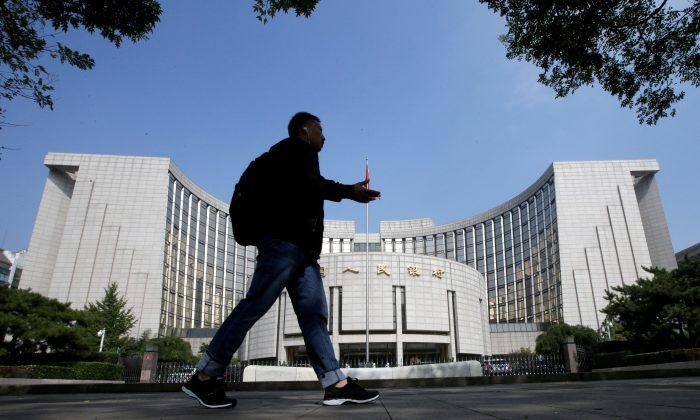BEIJING—China has brought forward 1 trillion yuan ($142.07 billion) of the 2020 local government special bonds quota to this year as it seeks to avert a sharper economic slowdown.
The finance ministry said on Nov. 27 that local governments must ensure that special purpose bonds—used to finance infrastructure projects—should be issued and used as early as possible.
“To ensure we can see results early next year ... and the economy can be effectively boosted as soon as possible,” the ministry said in a statement on its website.
The front-loaded debt quota was equivalent to 47 percent of the 2019 quota, it said.
“This is a big decision, which means that the government is pretty worried about the downward pressure on the economy,” said Hua Changchun, analyst at Guotai Junan Securities.
“Currently speaking, the economy has not been effectively stabilized yet.”
Tang Jianwei, senior economist at Bank of Communications in Shanghai, said faster local government bond issuance could help underpin infrastructure investment, but he cautioned against any quick impact on the economy.
“Special bonds could help stabilize investment, but any impact may not be felt until the first quarter,” he said.
Beijing has been leaning more heavily on fiscal stimulus to weather the current downturn, announcing 2 trillion yuan in tax and fee cuts this year and 2.15 trillion yuan in special local government bond issuance.
China’s economic growth cooled to a near 30-year low of 6 percent in the third quarter, and may dip lower in the fourth quarter amid a trade war with the United States.
Analysts do not expect an interim trade deal to brighten the outlook any time soon as the tariff war has only exacerbated a slowdown caused by weaker domestic demand.
Many local governments are facing increasing fiscal strains as the tax cuts and the broader economic slowdown reduce their revenues, hampering their ability to carry through on big infrastructure projects which Beijing is counting on to revive growth.
To support growth, the central bank is expected to ease policy further, although it has limited room to act due to debt, housing and inflation risks, analysts said.
“The central bank should coordinate with fiscal policy. It should release more liquidity, so we expect it to cut the reserve requirement ratio (RRR) again toward the year-end,” Tang said.
The central bank has cut the RRR seven times since early 2018, alongside modest cuts in its new benchmark lending rates.






Friends Read Free